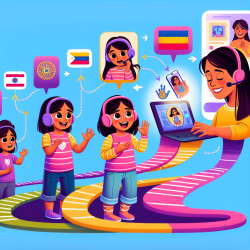Introduction
In the pursuit of enhancing child mental health services, it is crucial to consider the strategies employed by countries with limited financial resources. The research article "Global child mental health: what can we learn from countries with limited financial resources?" provides valuable insights into how nations with constrained budgets have developed effective mental health policies and services. By examining these approaches, practitioners can adopt innovative strategies to improve mental health outcomes for children, even in resource-challenged environments.
Integration of Mental Health into Primary Care
One of the key strategies highlighted in the article is the integration of mental health services into primary care systems. This approach is particularly beneficial in resource-limited settings, where mental health services are often stigmatized and underfunded. By embedding mental health services within primary care, countries like Chile and Brazil have managed to provide comprehensive care while minimizing stigma and optimizing resource use.
- Chile: Chile's primary care model includes general practitioners trained in mental health, working alongside psychologists and social workers. This collaborative approach ensures that mental health care is accessible and integrated into the broader healthcare system.
- Brazil: Brazil employs Family Health Teams (FHTs) responsible for delivering primary and community-based healthcare, including mental health services. This model emphasizes family-centered care and utilizes community resources effectively.
Community-Based Mental Health Programs
Countries like Kenya and Turkey have demonstrated the effectiveness of community-based mental health programs. In Kenya, training front-line health workers in mental health has improved service delivery, despite limited resources. Similarly, Turkey's response to natural disasters has led to the development of community-based mental health services, highlighting the importance of preparedness and resilience.
Incorporation into Broader Health Programs
Another strategy is incorporating child mental health initiatives into broader health programs, such as those addressing HIV/AIDS. This approach not only secures additional funding but also ensures that mental health is addressed as part of a holistic healthcare strategy. The interdependence between mental health and other health issues, such as HIV/AIDS, underscores the need for integrated care models.
Conclusion
The integration of child and adolescent mental health services into primary care systems and community-based programs is a cost-effective strategy that minimizes stigma and enhances service delivery. Practitioners are encouraged to explore these models and consider how they can be adapted to local contexts to improve child mental health outcomes.
To delve deeper into these strategies and learn more about the original research, please follow this link: Global child mental health: what can we learn from countries with limited financial resources?










